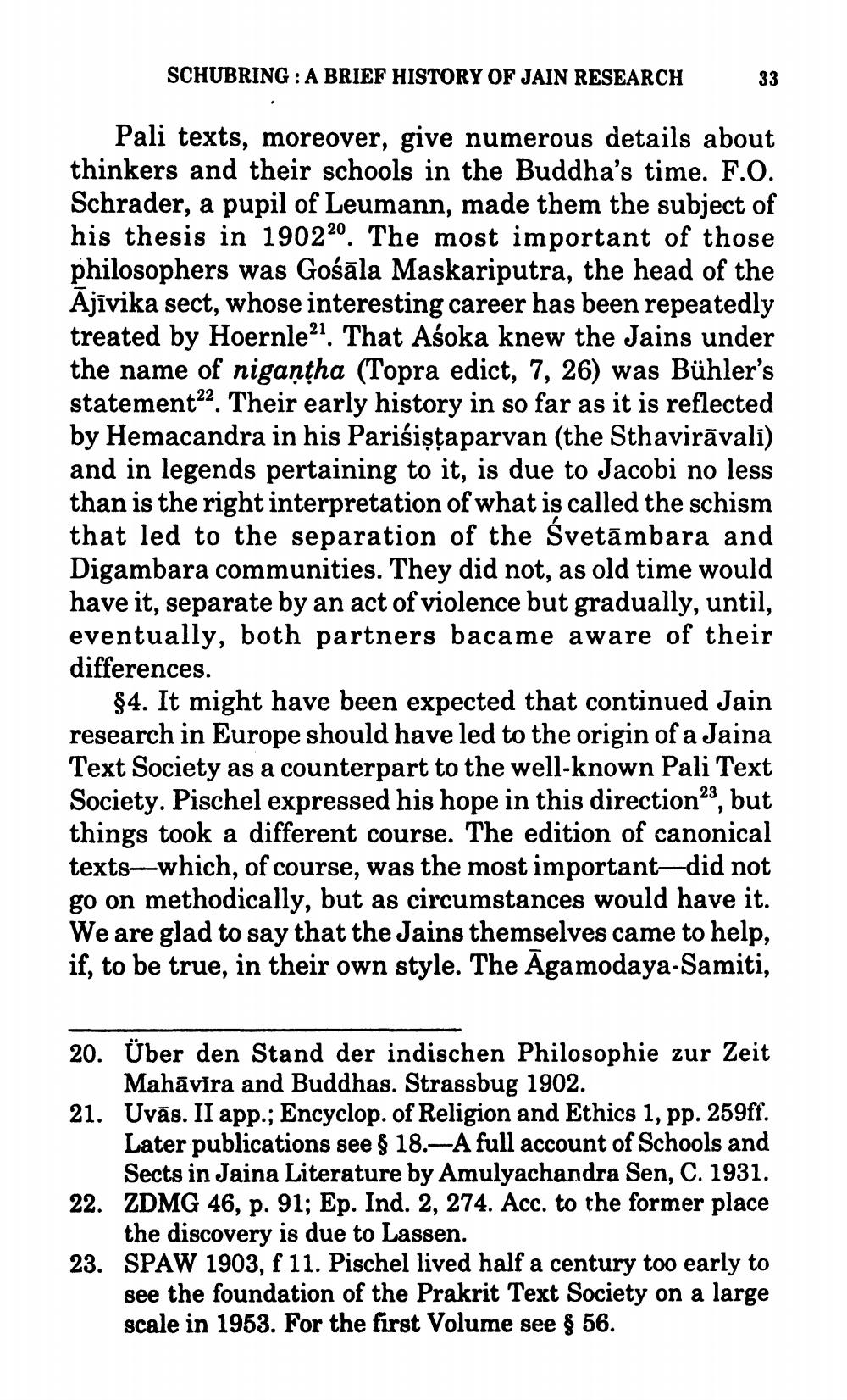________________
SCHUBRING : A BRIEF HISTORY OF JAIN RESEARCH
33
Pali texts, moreover, give numerous details about thinkers and their schools in the Buddha's time. F.O. Schrader, a pupil of Leumann, made them the subject of his thesis in 190220. The most important of those philosophers was Gośāla Maskariputra, the head of the Ājīvika sect, whose interesting career has been repeatedly treated by Hoernleal. That Aśoka knew the Jains under the name of nigantha (Topra edict, 7, 26) was Bühler's statement22. Their early history in so far as it is reflected by Hemacandra in his Parisistaparvan (the Sthavirāvali) and in legends pertaining to it, is due to Jacobi no less than is the right interpretation of what is called the schism that led to the separation of the Svetāmbara and Digambara communities. They did not, as old time would have it, separate by an act of violence but gradually, until, eventually, both partners bacame aware of their differences.
$4. It might have been expected that continued Jain research in Europe should have led to the origin of a Jaina Text Society as a counterpart to the well-known Pali Text Society. Pischel expressed his hope in this direction, but things took a different course. The edition of canonical texts—which, of course, was the most important did not go on methodically, but as circumstances would have it. We are glad to say that the Jains themselves came to help, if, to be true, in their own style. The Agamodaya-Samiti,
20. Über den Stand der indischen Philosophie zur Zeit
Mahāvīra and Buddhas. Strassbug 1902. 21. Uvās. II app.; Encyclop. of Religion and Ethics 1, pp. 259ff.
Later publications see 18.-A full account of Schools and
Sects in Jaina Literature by Amulyachandra Sen, C. 1931. 22. ZDMG 46, p. 91; Ep. Ind. 2, 274. Acc. to the former place
the discovery is due to Lassen. 23. SPAW 1903, f 11. Pischel lived half a century too early to
see the foundation of the Prakrit Text Society on a large scale in 1953. For the first Volume see $ 56.




